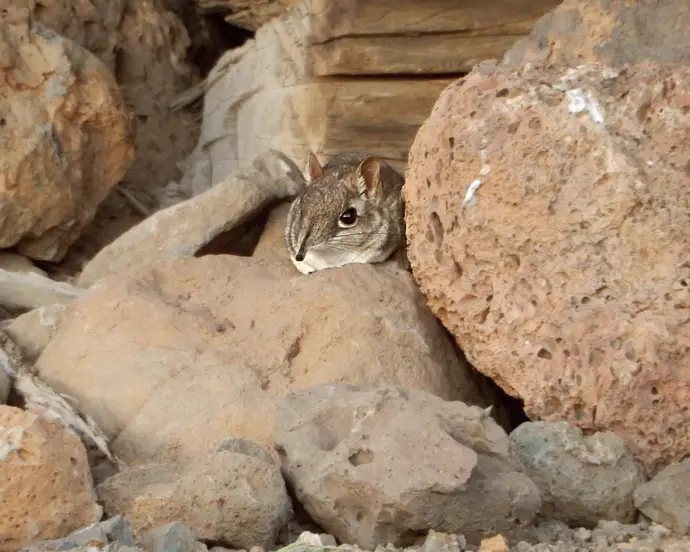Tiny Elephant-Shrew Species Re-Emerge In East Africa After Being Missing For 50 Years
Tags: opinion

The last scientific recording of the tiny elephant-shrew species, properly names as the Somali sengi, was in 1968. There were local sightings post that year but none were confirmed. Hence the mouse-sized species was considered extinct in the wild. Now after over 50 years, the cute little animals have been found in Djibouti, in east Africa.
20 species of the tiny elephant-shrew exist in the wild. The Somali sengi is among the more elusive ones. Scientists have been unable to track these mysterious creatures for 50 years now. But even before that, they were not too easy to come by. We have their tracks because 39 of the shrews were collected and stored in museums decades ago.

The Somali sengi is related to elephants, manatees, and aardvarks. This tiny elephant-shrew species can go up to the speeds of 30km/hr, mate for life, and have distinctive trunk-like noses. They suck up ants from the ground with this nose. The species was initially found only in Somalia, which gave them their name.
Hey, are you enjoying our content? Want to see also some thought-provoking videos from Truth Theory? We are on YouTube, make sure you subscribe to our YouTube channel, click HERE
Tiny Elephant-Shrews In Djibouti
This mysterious species naturally piqued scientists’ interests. They received local tips of the tiny elephant-shrew being spotted in Djibouti. They worked closely with the local community to set up safe traps in specific locations. The scientists used oatmeal, peanut butter, and yeast to set the traps. And one Somali sengi was quickly caught.
Read: A TAPIR IS BORN IN BRAZIL’S ATLANTIC FOREST FOR THE FIRST TIME IN A CENTURY
Steven Heritage is a research scientist from the Duke University Lemur Center, USA. He was a part of the team and was extremely happy to get the tiny elephant-shrew “back on the radar”. He explained to BBC that they were not sure which species was found in the country. So when they diagnosed the trapped animal, the tufted tail was indication enough.

Houssein Rayaleh, a Djiboutian research ecologist and conservationist, explained that the locals never considered the species to be missing. But the scientific community now has proof of their continued existence.
The next plan is to launch a new expedition in 2022 to GPS radio-tag individual elephant-shrews. This would be helpful to study their ecology and behavior. The team mentioned that there are no obvious threats to the habitat of the tiny elephant-shrew currently.
All images: Global Wildlife Conservation

Leave Comment: